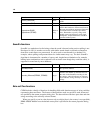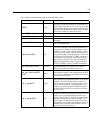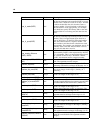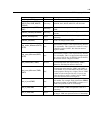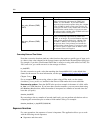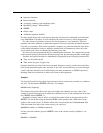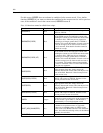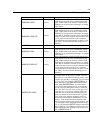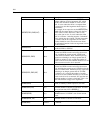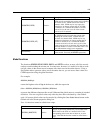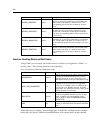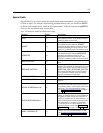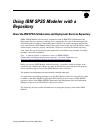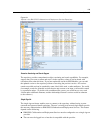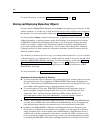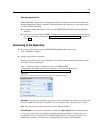
154
Chapter 8
Function
Result
Description
@OFFSET(FIELD, EXPR, INT)
Any
Performs the s
ame operation as the @OFFSET function
with the addition of a third argument, INT, which
specifies the maximum number of values to look
back. In cases
where the offset is computed from
an ex pression, this third argument should improve
performance.
For example,
in an expression such as@OFFSET(Foo,
Month, 12), t he system knows to keep only the last
twelve values of Foo; otherwise, it has to store
every value j
ust i n case. In cases where the offset
value is a constant—i ncluding negative “lookahead”
offsets, which must be constant—the third argument
is pointles
s and the two-argument version o f this
function should be used. S ee also the note about
self-referential function s in the two-argument version
described e
arlier.
@SDEV(FIELD)
Real
Returns the standard deviation of values for the
specified FIELD or FIELDS.
@SDEV(FIELD, EXPR)
Real
Returns the standard deviation of valu es for FIELD
over the last EXPR records received by the current
node, including the current record. FIELD must
be the name of a numeric field. EXPR may be any
expression evaluating to an integer greater than 0.
If EXPR is omitted, or if it exceeds the number of
records received so far, the standard deviation over all
of the records received so far is returned.
@SDEV(FIELD, EXPR, INT)
Real
Returns the standard deviation of valu es for FIELD
over the last EXPR records received by the current
node, including the current record. FIELD must be the
name of a numeric field. EXPR may be any expression
evaluating to an integer greater than 0. If EXPR
is omitted, or if it exceeds the number of records
received so far, the standard deviat i on over all of the
records received so far is returned. INT specifies the
maximum number of values to look back. This is far
more efficient than using just two arguments.
@SINCE(EXPR)
Any
Returns the number of records that have passed since
EXPR, an arbitrary CLEM expression, was true.
@SINCE(EXPR, INT)
Any
Adding the second argument, INT, specifies the
maximum number of records to look back. If EXPR
has never been true, INT is @INDEX+1.
@SINC
E0(EXPR)
Any
Considers the current record, while @SINCE d oes not;
@SINCE0 returns 0 if EXPR i s true for the current
record.
@SINCE0(EXPR, INT)
Any
Adding the second argument, INT specifies the
maximum number of records to look back.
@SUM(FIELD)
Number
Returns the sum of values for the specified FIELD
or FIELDS.



